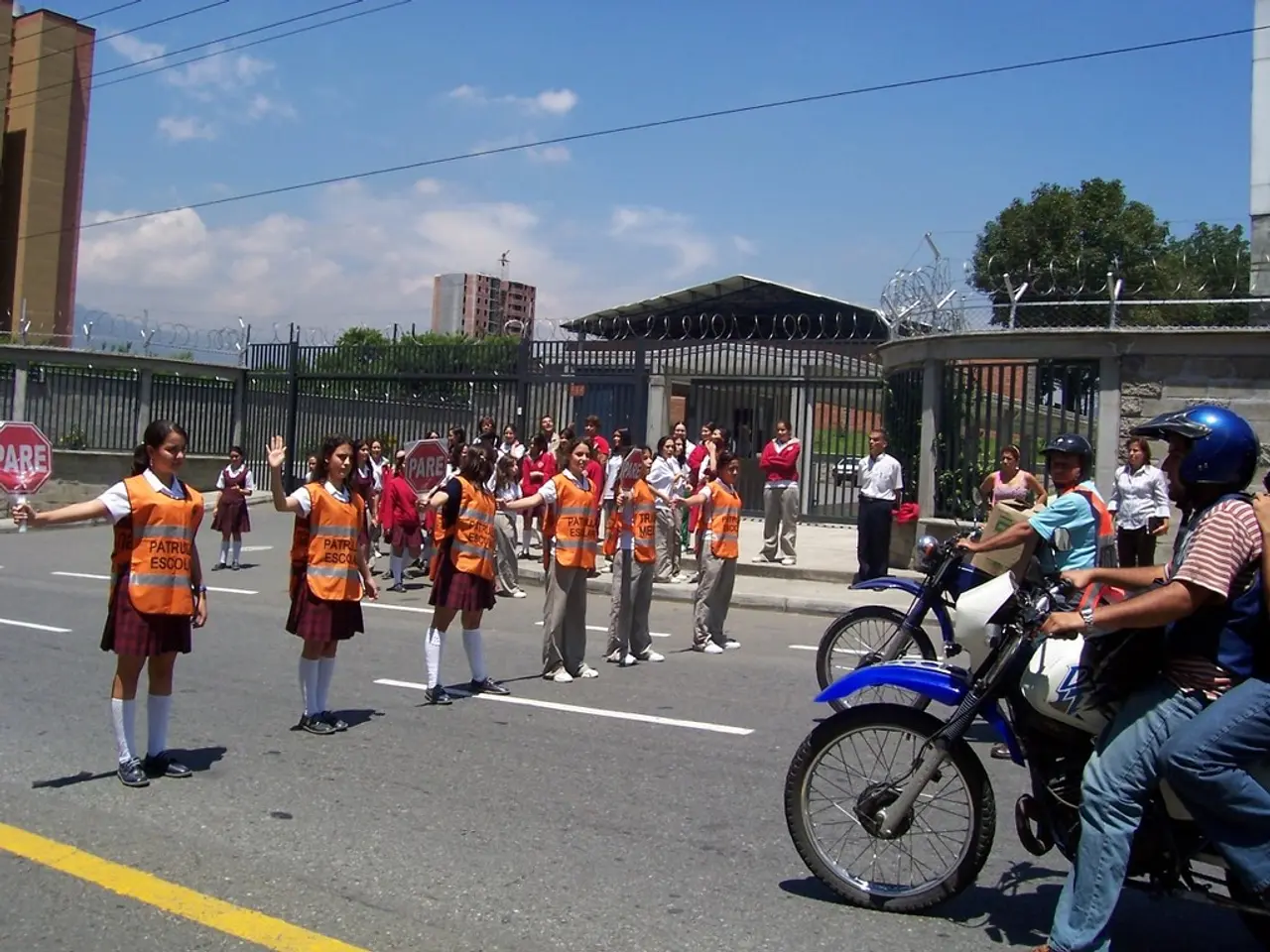Councils trained to establish School Zones for Pedestrian-Friendly Traffic
In an effort to promote healthy travel habits and reduce congestion, the National Active Travel Commissioner, Chris Boardman, has highlighted the importance of giving children the opportunity to walk, wheel, scoot, or cycle to school. According to Boardman, the majority of kids want to do just that.
The new guidance, published by Active Travel England and the Department for Transport, provides local authorities in England with the tools they need to set up and run School Street schemes. These schemes, which restrict motorised traffic outside schools during drop-off and pick-up periods, are designed to encourage active travel, improve road safety, and reduce pollution near school gates.
School Streets operate at set times during school days, typically in the morning and afternoon. During operational hours, motor vehicle access is restricted or prohibited to create pedestrian and cycling zones near school entrances. Vehicles are not permitted to drive in, out, or around the designated school street except for those with permits, such as residents or school transport.
The guidance emphasises a tailored, evidence-based, and community-engaged approach to implementing School Streets. This includes engaging with schools, parents, and residents, assessing feasibility, and considering alternative options if complete road closures are not possible. The process of school selection also takes into account evidence of traffic-related problems near the school, school support for the idea, and potential for active travel.
Rachel Toms, Director of Urbanism at active travel charity Sustrans, has expressed her support for the new guidance. Sustrans has been transforming the school run for years, making it easier, cheaper, and fun for children to walk, wheel, or cycle to school. Toms believes that School Streets will help design activity into neighbourhoods, making life happier and healthier for future generations.
Research suggests that traveling actively to school makes children more alert and engaged in class, healthier, and enjoy spending quality time with their friends and family. Toms looks forward to working with councils to realise their ambitions around making it easier to walk, wheel, and cycle.
The guidance also covers potential scheme designs, such as whole street, part of a street, or several streets around the school, with the aim of maximizing effectiveness and minimizing undesirable impacts. It examines the process of implementation, enforcement, and responsibilities after launching a School Street scheme.
It's important to note that there is no 'one size fits all' approach when planning to implement a school street. The guidance demonstrates that School Streets increase active travel on the school run, are supported by parents and residents, and do not cause significant road safety issues through traffic displacement.
Chris Boardman believes that School Streets will help reduce congestion on the roads during school run times for residents and businesses. He emphasises the importance of giving children the opportunity to exercise and build healthy travel habits for life.
The full guidance, along with relevant case studies, can be accessed here. For more information about the benefits of active travel and how to make it easier for children to walk, wheel, or cycle to school, visit the Active Travel England and Department for Transport websites.
- By establishing School Streets in neighborhoods, local authorities can promote a lifestyle that encourages active travel, such as walking, cycling, or scooting, for school-going children, which in turn can lead to healthier communities and happier lives for future generations.
- Home-and-garden life can be positively impacted through active travel initiatives like School Streets, as children who travel actively to school are more likely to be engaged and alert in class, allowing them to spend quality time with family and friends, fostering a sense of community and self-development.




